Griffithsin protects mice from genital herpes by preventing cell-to-cell spread
- PMID: 23536670
- PMCID: PMC3648100
- DOI: 10.1128/JVI.00012-13
Griffithsin protects mice from genital herpes by preventing cell-to-cell spread
Abstract
Griffithsin, which binds N-linked glycans on gp120 to prevent HIV entry, has the most potent HIV-1 inhibitory activity described for any antiviral lectin and is being developed for topical preexposure prophylaxis. The current studies were designed to further assess its potential by exploring its activity against herpes simplex virus 2 (HSV-2), a cofactor for HIV acquisition, in vitro and in a murine model. Safety was evaluated by examining its impact on epithelial barrier integrity in polarized cultures and testing whether repeated intravaginal dosing potentiates the susceptibility of mice to genital herpes. Griffithsin displayed modest inhibitory activity against HSV-2 if present during viral entry but completely blocked plaque formation if present postentry, reduced plaque size, and prevented cell-to-cell spread. These in vitro findings translated to significant protection against genital herpes in mice treated with 0.1% griffithsin gel. Griffithsin, but not placebo gel, prevented viral spread (visualized with a luciferase-expressing virus), significantly reduced disease scores, and resulted in greater survival (P < 0.05, log rank test). Protection persisted when HSV-2 was introduced in seminal plasma. Although griffithsin triggered a small decline in transepithelial electrical resistance in polarized cultures, this did not translate to any significant increase in the ability of HIV to migrate from the apical to the basolateral chamber nor to an increase in susceptibility to HSV-2 in mice treated with griffithsin gel for 7 days. These findings demonstrate that griffithsin inhibits HSV-2 by a unique mechanism of blocking cell-to-cell spread and support its further development for HIV and HSV-2 prevention.
Figures
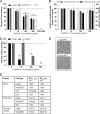
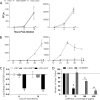
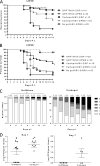

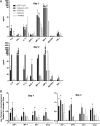
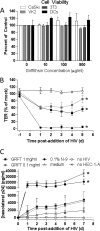

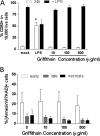
Similar articles
-
Griffithsin and Carrageenan Combination To Target Herpes Simplex Virus 2 and Human Papillomavirus.Antimicrob Agents Chemother. 2015 Dec;59(12):7290-8. doi: 10.1128/AAC.01816-15. Epub 2015 Sep 14. Antimicrob Agents Chemother. 2015. PMID: 26369967 Free PMC article.
-
Vaginally delivered tenofovir disoproxil fumarate provides greater protection than tenofovir against genital herpes in a murine model of efficacy and safety.Antimicrob Agents Chemother. 2014;58(2):1153-60. doi: 10.1128/AAC.01818-13. Epub 2013 Dec 9. Antimicrob Agents Chemother. 2014. PMID: 24323471 Free PMC article.
-
Antiviral Effects of ABMA against Herpes Simplex Virus Type 2 In Vitro and In Vivo.Viruses. 2018 Mar 9;10(3):119. doi: 10.3390/v10030119. Viruses. 2018. PMID: 29522484 Free PMC article.
-
Mechanistic Studies of Viral Entry: An Overview of Dendrimer-Based Microbicides As Entry Inhibitors Against Both HIV and HSV-2 Overlapped Infections.Med Res Rev. 2017 Jan;37(1):149-179. doi: 10.1002/med.21405. Epub 2016 Aug 12. Med Res Rev. 2017. PMID: 27518199 Review.
-
Herpes simplex virus and HIV: genital infection synergy and novel approaches to dual prevention.Int J STD AIDS. 2012 Sep;23(9):613-9. doi: 10.1258/ijsa.2012.011356. Int J STD AIDS. 2012. PMID: 23033511 Review.
Cited by
-
Exploring algae and cyanobacteria as a promising natural source of antiviral drug against SARS-CoV-2.Biomed J. 2021 Mar;44(1):54-62. doi: 10.1016/j.bj.2020.11.014. Epub 2020 Dec 7. Biomed J. 2021. PMID: 33640332 Free PMC article. Review.
-
Impact of Q-Griffithsin anti-HIV microbicide gel in non-human primates: In situ analyses of epithelial and immune cell markers in rectal mucosa.Sci Rep. 2019 Dec 2;9(1):18120. doi: 10.1038/s41598-019-54493-4. Sci Rep. 2019. PMID: 31792342 Free PMC article.
-
An algal lectin griffithsin inhibits Hantaan virus infection in vitro and in vivo.Front Cell Infect Microbiol. 2022 Dec 12;12:881083. doi: 10.3389/fcimb.2022.881083. eCollection 2022. Front Cell Infect Microbiol. 2022. PMID: 36579342 Free PMC article.
-
Production of Lectins from Marine Algae: Current Status, Challenges, and Opportunities for Non-Destructive Extraction.Mar Drugs. 2022 Jan 26;20(2):102. doi: 10.3390/md20020102. Mar Drugs. 2022. PMID: 35200632 Free PMC article. Review.
-
Sustained-release Griffithsin nanoparticle-fiber composites against HIV-1 and HSV-2 infections.J Control Release. 2020 May 10;321:84-99. doi: 10.1016/j.jconrel.2020.02.006. Epub 2020 Feb 5. J Control Release. 2020. PMID: 32035194 Free PMC article.
References
-
- Abdool Karim Q, Abdool Karim SS, Frohlich JA, Grobler AC, Baxter C, Mansoor LE, Kharsany AB, Sibeko S, Mlisana KP, Omar Z, Gengiah TN, Maarschalk S, Arulappan N, Mlotshwa M, Morris L, Taylor D. 2010. Effectiveness and safety of tenofovir gel, an antiretroviral microbicide, for the prevention of HIV infection in women. Science 329:1168–1174 - PMC - PubMed
-
- MTN 25 November 2011, posting date MTN statement on decision to discontinue tenofovir gel in VOICE, a major HIV prevention study in women. http://www.mtnstopshiv.org/node/3909 MTN, Pittsburgh, PA
-
- MTN 28 September 2011, posting date MTN statement on decision to discontinue use of oral tenofovir tablets in VOICE, a major HIV prevention study in women. http://www.mtnstopshiv.org/node/3619 MTN, Pittsburgh, PA
-
- Baeten JM, Donnell D, Ndase P, Mugo NR, Campbell JD, Wangisi J, Tappero JW, Bukusi EA, Cohen CR, Katabira E, Ronald A, Tumwesigye E, Were E, Fife KH, Kiarie J, Farquhar C, John-Stewart G, Kakia A, Odoyo J, Mucunguzi A, Nakku-Joloba E, Twesigye R, Ngure K, Apaka C, Tamooh H, Gabona F, Mujugira A, Panteleeff D, Thomas KK, Kidoguchi L, Krows M, Revall J, Morrison S, Haugen H, Emmanuel-Ogier M, Ondrejcek L, Coombs RW, Frenkel L, Hendrix C, Bumpus NN, Bangsberg D, Haberer JE, Stevens WS, Lingappa JR, Celum C. 2012. Antiretroviral prophylaxis for HIV prevention in heterosexual men and women. N. Engl. J. Med. 367:399–410 - PMC - PubMed
Publication types
MeSH terms
Substances
Grants and funding
LinkOut - more resources
Full Text Sources
Other Literature Sources
Medical

